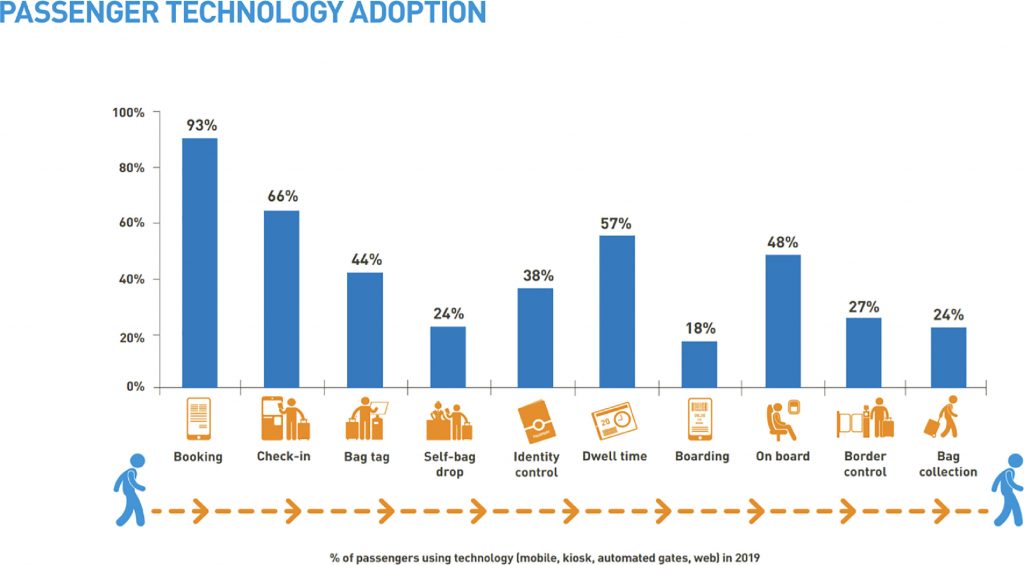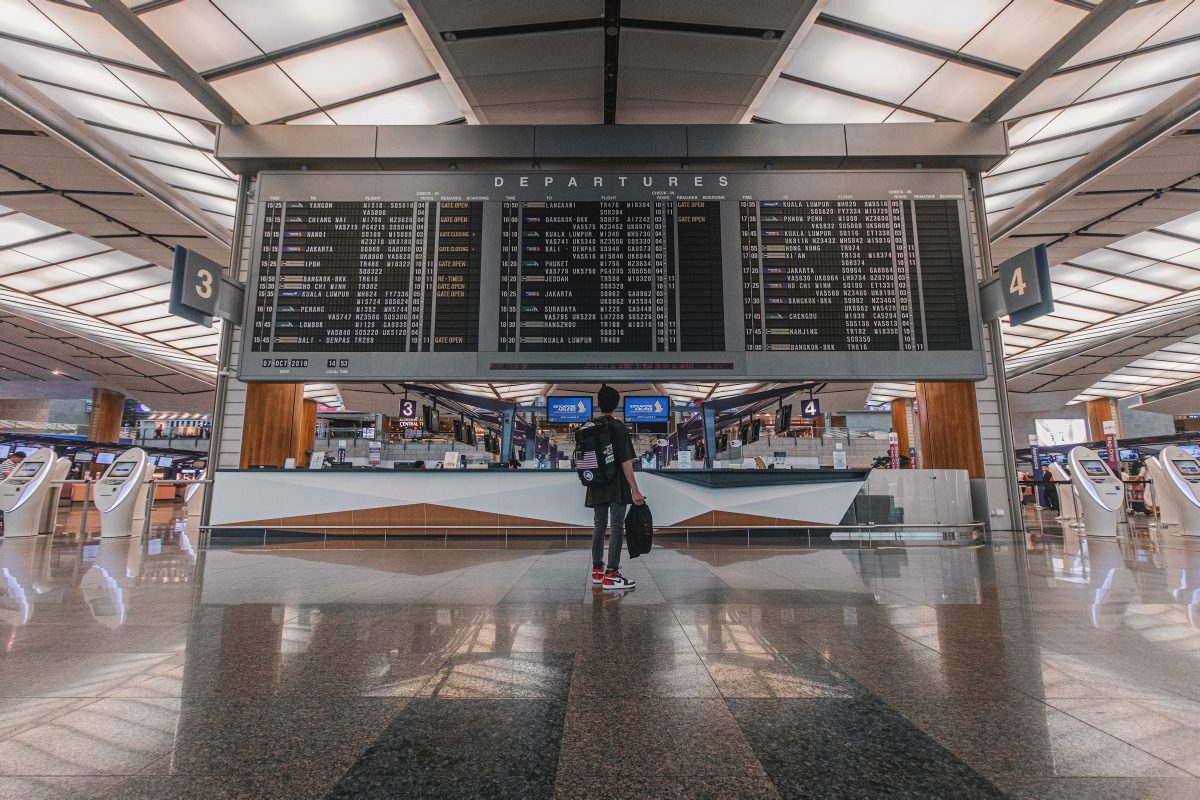Our fingerprints, irises and facial features are all characteristics that are unique to ourselves, making it the perfect form of evidence to prove your identity. In the past decade, the use of biometrics in the airport industry has therefore also skyrocketed (OAG, 2022). It allows for faster processing of travelers at border control and in the boarding process. Facial recognition can speed up the process by 2 times (Paterson, 2022). It makes travel more secure, as it can be confirmed with certainty that someone who presents him or herself is actually present at the airport (TSA, n.d.).
US legislation had already put in the mandatory recording of biometrics from its visitors since 2001, which you might have encountered in practice yourself by the required fingerprinting and portrait picture at the border (OAG, 2022). This allowed the US government to have more information on those who visited the country (DHS, 2007). Closer to home, the Netherlands has also had eGates at the border control since 2014, which allows EU citizens to cross the border by an automated process where you only have to insert your passport and look into a camera. The digitized passport picture in newer biometric passports allows for facial recognition and comparison (BCD Travel, 2014).
These solutions speed up and secure processes at the airport a lot, but the systems also do record a lot of our personal information. For example, the exact number and timing of your border crossings are stored, and in order to make the facial recognition possible, a large amount of data points derived from your passport photo and the real time facial recognition scan are processed (Paterson, 2022). There are even reports of bias in facial recognition, possibly leading to secondary checks based on e.g., skin color and gender (LaDier, n.d.). These privacy concerns are important to keep in mind.
In 2018, Delta Airlines has launched a biometric terminal in Atlanta. It allows passengers who have provided their passport information ahead of their arrival to experience a fully touchless experience. For check-in, bag drop, security check, boarding, and passport control on return, they only need to scan their face at the designated checkpoints, no need for their passport at all (Steele, 2018). However, in addition to Detroit since 2019, these two airports remain the only ones to have facial recognition technology from curb to plane. Is there even sufficient demand for such technology?
Research has shown that the biometrics adoption rate in the air travel industry differ per process. For example, in the figure below it can be seen that the adoption rate is highest for the booking process and the lowest for boarding. Yet airlines and airports seem to push the application of biometrics specifically in the passport control and boarding processes (Efthymiou, 2021).

The use of biometrics has still a lot of potential in the dwell time process, it appears. This is the time between completing all the required checks and the boarding process (Efthymiou, 2021). The adoption rate is relatively high and at the time of writing, there are no innovations to be found there yet. Maybe you could even pay in the duty-free store by just looking at a payment terminal? There is still a lot to be improved and biometrics have a lot of potential in the air travel industry. I believe it will become a part of future air travel experience, as it has already demonstrated it can improve efficiency and security. I think the use of biometrics will also lay the foundation for travel with a digital passport, or possibly even without it.
References
- BCD Travel (2014). Self-service paspoortcontrole met de e-Gates op Schiphol. Accessed via https://www.bcdtravel.com/move-nl/self-service-paspoortcontrole-met-de-e-gates-op-schiphol/.
- DHS (2007). US-VISIT: Keeping America’s Doors Open and Our Nation Secure. Accessed via https://www.dhs.gov/xlibrary/assets/usvisit/usvisit_edu_traveler_brochure_english.pdf.
- Efthymiou, M. & N. Khan (2021). The use of biometric technology at airports: The case of customs and border protection (CBP). International Journal of Information Management Data Insights, 1(2). https://doi.org/10.1016/j.jjimei.2021.100049.
- LaDier (n.d.). Incorporating biometrics in aviation: The journey to touchless U.S. air travel. Accessed via https://www.internationalairportreview.com/article/118268/biometric-technology-aviation-history-benefits/.
- Paterson (2022). Future of flying: Is a queue-free airport possible? Accessed via https://www.thestar.com/business/mars/2022/08/22/future-of-flying-is-a-queue-free-airport-possible.html.
- Steele (2018). Delta unveils first biometric terminal in U.S. in Atlanta; next stop: Detroit. Accessed via https://news.delta.com/delta-unveils-first-biometric-terminal-us-atlanta-next-stop-detroit.
- TSA (n.d.). Biometrics Technology. Accessed via https://www.tsa.gov/biometrics-technology.


